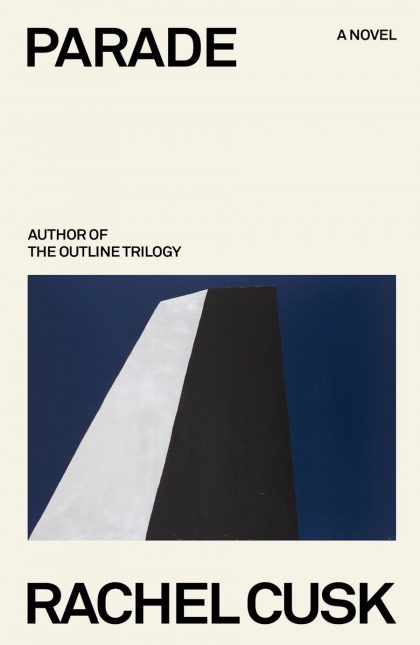Parade: A Novel
- By Rachel Cusk
- Farrar, Straus and Giroux
- 208 pp.
- Reviewed by Clifford Garstang
- June 21, 2024
A provocative, not wholly satisfying meditation on art.

To paraphrase C.S. Lewis, what you see or create depends both on where you sit and who you are. With respect to works of art, from what perspective are you imagining or viewing the piece? And how has your own experience — your gender, for one thing — shaped your vision as either artist or viewer? These questions are at the heart of Parade, Rachel Cusk’s intriguing new novel.
Not that it matters, but is it really a novel? Parade comprises four independent parts, each of which introduces one or more artists referred to only as “G.” (When Cusk published them separately in magazines, she assigned a different letter to each artist, a discovery that ended my hope of finding some cosmic significance in the G used in the book.) We meet — sometimes through their own eyes and sometimes through the eyes of a spouse or acquaintances — a male painter, a female painter, a female sculptor, and a male filmmaker, and also learn briefly of two more G’s, a marginalized Black male painter and a 19th-century female painter who died in childbirth, who serve more as illustrations than characters.
The first part of Parade is about a painter whose work has recently undergone an inversion so that the paintings now appear to be upside down. (This G is based, apparently, on Georg Baselitz, who used the technique.) G’s wife interprets the inversion as “something disturbing about the female condition.”
G and his wife see an exhibition of the work of a Black artist (identified as the artist Norman Lewis when the piece appeared in the New Yorker but here only referred to as G), and the wife understands his work as an expression of his marginalization, which she also feels. They then travel to another city to see an exhibition of the work of a female sculptor (probably Louise Bourgeois), also called G. Her work, which is central to the third part of the novel, has a genderless character that the wife connects with, given her own existence in G’s shadow.
The subsequent parts explore the practice of other artists working in various media, all named G. There is a successful female painter in a section that alternates between third-person and first-person passages, a shifting of perspective akin to stepping closer and then away from a work of art. Her subject, she reveals, is shame:
“G decided that shame emanated from the body and was not the same as regret or embarrassment. It was not conscious or analytical. It was associated with production, with the body as a product and the body’s own products.”
Although the female sculptor G doesn’t appear, a group of her admirers gathers after a museum exhibition to discuss her work, delivering opinions from their varied perspectives. An art critic in the group observes, “One of the things that interests me about G’s work…is that she treats both sexes as doomed by gender, as almost interchangeable in that sense, so that a third sex emerges in which the man and the woman have merged into each other and become neutral.” We also meet a filmmaker whose first-person narrative is in the plural, perhaps because he inhabits multiple identities under an assumed name, which contributes to his perception of himself as a spy:
“The spy sees more clearly and objectively than others, because he has freed himself from need: the needs of the self in its construction by and participation in experience.”
The feeling one gets from the sum of these narratives is of a catalog — a parade, perhaps — of artistic techniques and philosophy. Each of the artists sees the world differently, motivated by their own genders and life experiences. Similarly, how viewers interpret the work will depend on their perspective and lived experience.
As evidenced by Cusk’s novel, this is as true for prose as it is for the visual arts. However, the whole is perplexing and, in the end, more of a rambling treatise on art than a compelling story. Still, Parade arms the reader with a broad palette of ideas for interpreting the arts in an ever-changing world.
Clifford Garstang is the author of three novels, The Last Bird of Paradise, Oliver’s Travels, and The Shaman of Turtle Valley, a novel in stories, What the Zhang Boys Know, winner of the Library of Virginia Literary Award for Fiction, and two story collections, House of the Ancients and Other Stories and In an Uncharted Country. He is also the editor of Everywhere Stories: Short Fiction from a Small Planet, a series of anthologies of stories set around the world.

